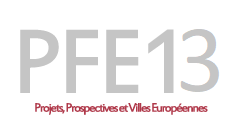Содержание
If everyone in your group thinks and acts the same, then why do you have a group? The benefit of working in a team is that you have access to diverse experiences, skills, and opinions that aren’t possible alone. Create a weekly work plan with tasks and share it with the team. (Although, it does make the stages easier to remember.) Each is aptly named and plays a vital part in building a high-functioning team.
- He refined and developed the model in with the addition of a fifth stage.
- Though these are not followed rigidly, they do represent a broad pattern that may be observed and predicted in many settings across team’s time together.
- It can also help you predict how much additional time your group might need to complete the current project.
- In the Forming stage, personal relations are characterized by dependence.
Sharing the knowledge of the concept of « Teams – Forming, Storming, Norming, Performing » is extremely helpful to the team. Psychologist Bruce Tuckman suggested 4 stages of team development, also called Tuckman’s model of group development in the mid-1960s. These stages are crucial to understand how teams evolve over a period of time. All the five stages of team development follow one another in order so that individuals can become an effective team that can mitigate weaknesses and enhance strengths.
Proper Team Support
There are problems with that superficial type of agreement. First, everyone’s ideas and concerns are important and should be tactfully presented and considered. Members who don’t raise their concerns simply aren’t giving the team all that they have to offer. Second, conflicts that aren’t addressed initially can get worse and lead to a blow-up later. Leaders need to ensure that they’re getting everyone’s insights and listening to their concerns even if that involves disagreements and tension. After all, addressing and resolving conflicts can actually build trust and closeness in teams.
The interventions we prescribe will depend on our findings during the assessment. It takes leadership to grow a group of individuals into a high performance self-sufficient team. There’s no single strategy or plan to enable this switch.

Perhaps you already run a teacher-powered school and are seeking ways to strengthen your team, modify your processes, or manage internal changes in leadership. They do this by effectively progressing through the stages of development. The length of time necessary for progressing through these stages depends on the experience, knowledge, and skills of team members and the support they receive. In addition, teams may work at varying rates based on issues and obstacles they may encounter, such as changing team members, tasks, and goals.
The 4 Stages Of Team Development
You can’t look over their shoulders and make sure that everyone is doing their work. Ideally, your team is made up of reliable people that know and fulfill their responsibilities. Every team should have a facilitator─a person who leads and guides meetings and discussions. Remember that rules are created to help your team stay focused on what matters most─performance.
Few people think that the Turkish team has the level of talent that the Brazilian team possesses. However, many of the Turkish team members have known each other for quite awhile, and have developed excellent teamwork. As true intentions and behaviours start to surface, conflicts and tension arise. This is https://globalcloudteam.com/ also a phase where perceptions and judgements give way to unhealthy practices between team members. It is the leader who will have to create a healthy and positive work environment within his team. He can use tools for instance training, discussions and workshops for the development of the team members.
The storming stage is necessary to the growth of the team. It can be contentious, unpleasant and even painful to members of the team who are averse to conflict. Tolerance of each team members and their differences needs to be emphasized. This phase can become destructive to the team and will lower motivation if allowed to get out of control. Our work is based on a concept developed by Argyris and Schon which suggests that individuals and organizations maintain theories of action that they have developed about and for themselves.

The performing stage of team development is the stage when the group is working at its best and has completed most of its allotted work. The members use each other’s strengths to reach peak capacity and enhance the levels of team efficiency and productivity. The group can gain clarity around metrics and vision to achieve desired success. With a thoughtful look at each stage of team development, you can solve problems before they derail the team.
It often occurs when the first conflict occurs and signifies that the honeymoon period is over. As team members start working together there will be interpersonal and technical challenges and differences in opinions, working styles and personalities. Although achieving the performing stage is generally positive, that does not mean that all teams at that stage outperform all teams at lower stages of development. First, the competence of the team members is an important moderator.
About Team Development
The team members are now competent, autonomous and able to handle the decision-making process without supervision. Dissent is expected and allowed as long as it is channeled through means acceptable to the team. The initial “get-to-know-you” stage is over and now team members are starting to test boundaries. Their behavioral styles are becoming apparent as the niceties fade. As people start to understand their roles, they either settle in or maneuver for more influence.
Business owners, managers, and entrepreneurs are often viewed as team leaders. Throwing a group of talented people together doesn’t mean that they will form a great team. Hoping that your company or project will be a success won’t make it happen.
Because of « fear of exposure » or « fear of failure, » there will be an increased desire for structural clarification and commitment. Although conflicts may or may not surface as group issues, they do exist. Questions will arise about who is going to be responsible for what, what the rules are, what the reward system is, and what criteria for evaluation are.
Leaders and/or Supervisors of the team during this phase tend to be more participative than in the earlier stages. The team members themselves can be expected to take more responsibility for making decisions and for their professional behavior. In some cases, the storming stage can be resolved quickly. The maturity level of several team members usually determines whether the team will ever move out of this stage.
What Are The 5 Stages Of Team Development?
When you know how long a process takes, you can identify areas that could be made more efficient. It can also help you predict how much additional time your group might need to complete the current project. Encouraging your team to share their ideas and opinions is the key to finding the « big ideas ». When conflicts are resolved, it can improve existing processes and bond members together.

Of course, you may still think that your tech guy’s choice in music is obnoxious. But, you also admire his knowledge of web design and coding skills, and value his opinions on anything tech-related. Once you’re aware of their flaws, you either learn to embrace them or the relationship will end quickly. But, because this stage focuses more on the people than on the work, your team probably won’t be very productive yet. Leaders and/or Supervisors of the team during this phase are almost always participative. The team itself will make most of the necessary decisions.
What Is The Forming Stage Of Team Development?
Some will observe that it’s good to be getting into the real issues, whilst others will wish to remain in the comfort and security of stage 1. Depending on the culture of the organization and individuals, the conflict will be more or less suppressed, but it’ll be there, under the surface. To deal with the conflict, individuals may feel they are winning or losing battles, and will look for structural clarity and rules to prevent the conflict persisting. The team meets and learns about the opportunity, challenges, agrees on goals and begin to tackle the tasks.
What Is The Adjourning Stage Of Team Development?
Group identity, loyalty and morale are all high, and everyone is equally task-orientated and peopleorientated. This high degree of comfort means that all the energy of the group can be directed towards the task in hand. Members attempt to become oriented to the tasks as well as to one another. Discussion centers around defining the scope of the task, how to approach it, and similar concerns.
Team starts doing meaningful work by leveraging each other’s strengths and avoiding weaknesses. Actively listening to others viewpoints and providing help becomes a norm. With Toggl Track, team members can track the work that they do. This is especially useful if you have some people that are working remotely. Each person plays a part and has something to contribute.
Not all groups reach this stage, characterized by a state of interdependence and flexibility. Everyone knows each other well enough to be able to work together, and trusts each other enough to allow independent activity. Roles and responsibilities change according to need in an almost seamless way.
If not handled properly, such teams are bound to fail eventually. At this stage it’s crucial to determine the core needs of each team member. First one-on-one meeting is a great way to connect with team members and learn about their background, experience and expectations. While storming is not a desirable state, it’s an important state to enable people in the team to open up, understand themselves and each other.
Stage 2: Storming Conflicts
The team also creates roles and processes for the school leadership team that will run the school in the Norming, Performing, and Transforming stages. Some work teams develop to a stage where they’re cohesive and achieve impressive synergies of the team members’ efforts and capabilities. The process of building such teams requires members to get to know each other and negotiate roles and norms.
The Forming stage of team development is the time when individuals start understanding that they are an integral part of the team and will have to work together with each other. The forming stage of development helps to develop a better understanding and strong relationship with each other. The 2 storming stage as the name suggests is the second of the five stages of team development.
One of the ways this can be achieved is by using a tough initiation. Keep the size of the team to a maximum of about 12 members, because people feel more attracted to small, intimate groups. E.g. Instead of saying “Your behaviour is bad and discouraging to other team members…”, make them reflect on the situation by asking “I wanted to talk to you about our last meeting .
Group members rely on safe, patterned behavior and look to the group leader for guidance and direction. Group members have a desire for acceptance by the group and a need to be know that the group is safe. They set about gathering impressions and data about the similarities and team building phases differences among them and forming preferences for future subgrouping. Rules of behavior seem to be to keep things simple and to avoid controversy. Before roles and norms are defined, there is often conflict over who will perform which roles and what norms should emerge.
